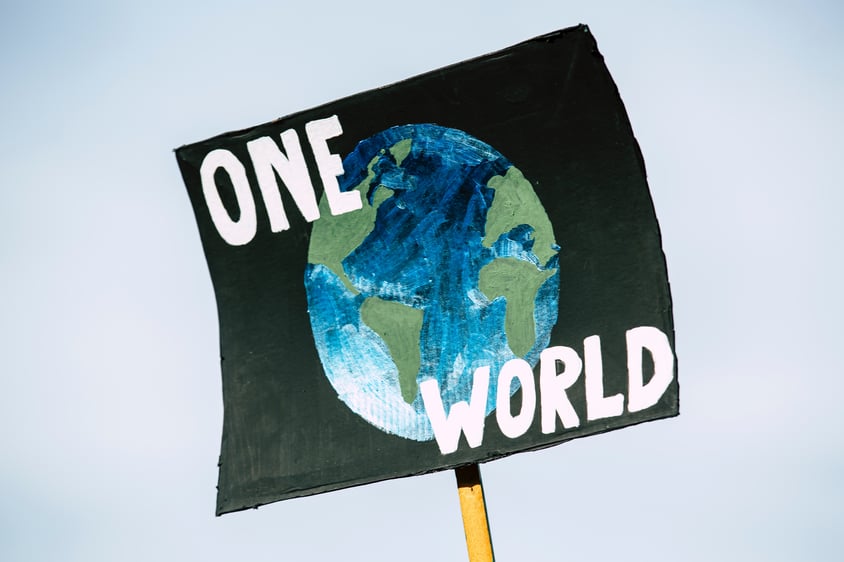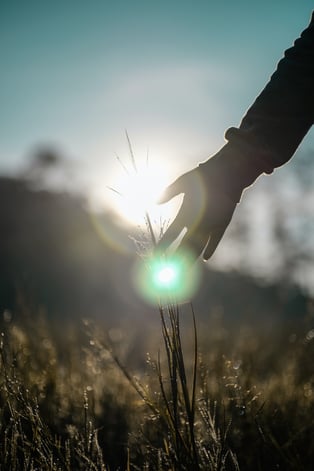
We once thought climate change and the continued degradation of the environment was simply the product of humans overusing and over-abusing our natural resources.
But the truth is, it’s actually far more complicated than that.
Climate change shares a turbulent history with racial injustice, and scientists across the board agree that we have to find simultaneous solutions to really make positive progress. If we truly want to solve environmental issues, we must also solve the systemic racism and widespread economic inequalities in our society.
Why are these two issues connected? Why are people of color far more at risk from environmental health hazards than white people? For that answer, we have to first look at where the roots of this problem began.
A Brief History
In the U.S., environmental degradation has a very clear beginning: the arrival of slaves, primarily black slaves, to America. It was then that a massive change in the landscape began to occur that essentially provided resources for the privileged, white class to thrive, literally on the backs of slaves.
This environmental legacy of extraction and inequality took firm hold and has yet to let go. Modern-day neighborhoods are still shaped from discriminatory housing policies and have a direct influence on where people of color live today. These neighborhoods have higher average temperatures due to fewer trees and more pavement. As a result, one study found that black and Hispanic communities in the U.S. are exposed to far more air pollution than they produce, while white Americans experience better air quality than the national average, even though research shows white activities are the source of most pollutants.
It’s comfortable for us to separate out environmental degradation from racial inequalities, but studies show that climate change is already harming our country’s poorest counties. These low-income communities, primarily inhabited by people of color, are experiencing massive, immediate health problems. Faced with this truth, we can’t deny there has also been massive environmental inequalities.
Let’s Get Our Terms Straight
We can categorize this connection between racial inequality and climate change into what’s called environmental justice and environmental equity, but be careful not to confuse the two. While connected, these two terms mean different things.
Environmental Equity
“Equitable sharing of harmful effects of pollution or environmental hazards by a single community. No single community bears the harmful effects of pollution and environmental hazards.” (source)
Basically, environmental equity is a human right. When there is environmental equity, no single group or community will have privilege over other communities, especially when it comes to disasters, hazards and pollution, and especially as a result of laws or policies.
It’s helpful to visualize this in terms of an environmental disaster like a hurricane. Environmental equity means that everyone has equal access to the resources they need to protect themselves and their homes from the hurricane. For example, everyone would have the ability to evacuate, have access to sandbagging materials, and even more broadly everyone would have the right to live somewhere that wasn’t vulnerable to flooding based on harmful laws and policies.
Environmental Justice (or Environmental Equality)
“Every single person has the right to live in a healthy environment, regardless of race, income, age, gender and nationality. No one’s health or quality of life should suffer because of the environment they live in.” (source)
In other words, environmental equity is achieved when justice is present. To take it one step farther, environmental equity is the outcome of environmental justice and is only achieved when there is fair and just treatment of laws, rules and policies that involve environmental hazards.
To look at environmental justice from the flip side, this is also the deep understanding that the health of an entire community will suffer when any one person in the community does not have access to fresh air, wholesome food, safe transportation and a healthy place to live.
Why is Environmental Equity Important?
Although we think the importance of equity is sort of embedded in the definition itself, we don’t have to look far in current events to truly see how environmental inequities are impacting our communities.

People who are most impacted by environmental issues like pollution and extreme weather events are also those among us who have been most impacted by Covid-19. Already suffering from environmentally-related health issues like asthma and upper respiratory diseases, communities of color now have to deal with the fact that they are disproportionately impacted by the worst global pandemic in a hundred years.
This is where the two issues – climate change and racial injustice – converge. The need, and the right, to provide sustainable, safe infrastructure, clean air, equal access to jobs and health care, and reliable food supplies that provide community-wide food security must also be present in the conversation about renewable energy and climate change.
Starting now, today, when we talk about global sustainability issues, we also must talk about environmental achievements on a micro, community-level scale. Luckily, here in the Midwest, we have people doing both.
Local Heroes Fighting for Environmental Justice
Structural racism makes it more likely that certain people live in certain communities. More often than not, those communities are suffering from long-term pollution and economic injustices, like large-scale polluters moving from wealthy, white neighborhoods to low-income neighborhoods populated by people of color. In Chicago, that’s exactly what is happening with a proposed move by General Iron to Chicago’s South Side, positioning this neighborhood as a sacrifice zone. Although General Iron closed it’s North Side facility, plans are still underway to reopen in a mostly low-income, Latino neighborhood.
Responding to this injustice are such local groups like People for Community Recovery (PCR) and the Southeast Environmental Task Force (SETF). Both organizations are demanding that city representatives put a halt to perpetuating discriminatory policies that have put communities of color living in close quarters with industrial polluters, resulting in these communities suffering from related chronic health conditions.
On a larger scale, the new federal administration has made some promising changes, such as making agriculture a key part of the climate agenda as well as taking steps to improve minority farmers’ access to land. In addition, there are some incredibly inspiring black leaders working in the environmental field. If you’re looking for progress a little closer to home, here are a few of our favorite groups tackling these complicated issues:
- People for Community Recovery
- The Greening of Detroit: Growing Tomorrow’s Detroit
- LVEJO: Leadership Development for the Sustainable Self Determination of Little Village
- Blacks in Green: The Green Living Room
- ERBFF: Fred A. and Barbara M. Erb Family Foundation
- Environmental Law & Policy Center
More to Come
We’ve only skimmed the surface in the intertwining problems resulting from racial inequalities and environmental degradation and we’ll be talking about this in a number of upcoming articles. Stay tuned here at the Ecogardens blog for more information on some of our local environmental justice warriors, and how organizations can get involved.
If you know of someone working on or suffering from environmental inequalities, please reach out. This is an issue we care deeply about and we’d love to hear your thoughts on how we can make progress towards environmental equity.

